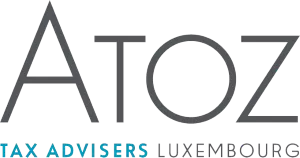OUR INSIGHTS AT A GLANCE
- On 8 January 2021, the Luxembourg tax authorities issued a Circular in order to provide guidance on the interpretation of the interest deduction limitation rules laid down in Article 168bis of the Luxembourg income tax law (through which the EU Directive laying down rules against tax avoidance practices ("ATAD 1") has been transposed into Luxembourg law).
- The interest deduction limitation rules limit the interest deductibility for tax purposes for Luxembourg corporate taxpayers and Luxembourg permanent establishments of foreign taxpayers, unless they qualify as financial undertakings or stand-alone entities. The limitation applies to exceeding borrowing costs (i.e., the amount by which the borrowing costs exceed the interest income in a given year) and corresponds to the higher of EUR 3mio or 30% of the tax EBITDA per fiscal year.
- The IDLR provisions in Luxembourg tax law include a number of definitions which are core to the practical application of the limitations for taxpayers. Their interpretation has been the subject of multiple discussions in the past years as investors, asset managers and advisors have been looking for certainty and a clear assessment of the risks embedded into their existing investment structures.
- The long-awaited Circular sheds light on various points. However, some other key aspects unfortunately remain unclear.
On 8 January 2021, the Luxembourg tax authorities issued a new Circular n°168bis/1 (the "Circular") in order to provide guidance on the interpretation of the interest deduction limitation rules ("IDLR") laid down in Article 168bis of the Luxembourg income tax law ("LITL") (through which the Council Directive (EU) 2016/1164 of 12 July 2016 laying down rules against tax avoidance practices ("ATAD 1") has been transposed into Luxembourg law).
The IDLR have been applicable since 1 January 2019 and shall be interpreted according to the Circular for all tax years from 2019 (the Circular merely has clarifying character with regard to the interpretation of the existing legal provisions).
The IDLR limit the interest deductibility for tax purposes for Luxembourg corporate taxpayers and Luxembourg permanent establishments of foreign taxpayers, unless they qualify as financial undertakings or stand-alone entities. The limitation applies to exceeding borrowing costs (i.e., the amount by which the borrowing costs exceed the interest income in a given year) and corresponds to the higher of EUR 3mio ("Safe Harbour Rule") or 30% of the tax EBITDA per fiscal year.
The IDLR provisions in Luxembourg tax law include a number of definitions which are core to the practical application of the limitations for taxpayers. Their interpretation has been the subject of multiple discussions in the past years as investors, asset managers and advisors have been looking for certainty and a clear assessment of the risks embedded into their existing investment structures.
While the Circular provides clarity on some of these subjects, and also hints at the appropriate computation of the tax EBITDA used to calculate the deductibility threshold, it still leaves certain questions unanswered and will, not unsurprisingly, push the taxpayers to carefully consider its acceptable level of risk.
The concept of borrowing costs and interest income
The Circular specifies that borrowing costs encompass interest expenses on any type of debt, other costs economically equivalent to interest and certain expenses incurred in connection with financing.
Borrowing costs may only concern deductible interest expenses, i.e., non-deductible interest expenses, regardless of the reason for the non-deductibility (e.g. anti-hybrid rules), do not qualify as borrowing costs.
The Circular provides a non-exhaustive list of borrowing costs, in particular:
- Fixed and variable remuneration on profit participating loans;
- Imputed interest on certain financial instruments such as convertible bonds and zero coupon bonds (including issuance and redemption premiums);
- Amounts paid on alternative financing arrangements such as Islamic finance;
- The finance cost element of finance lease payments on leasing contracts;
- Capitalised interest included in the acquisition costs of assets in the balance sheet or amortisation of capitalised interest;
- Amounts measured by reference to a funding return under transfer pricing rules (e.g. deemed interest deductions in application of transfer pricing rules);
- The notional interest element of derivatives and hedging instruments in relation to an entity's borrowings;
- Certain foreign exchange losses on borrowings and instruments connected with the raising of finance (excluding foreign exchange losses on the principal amount of borrowings);
- Guarantee fees on financing arrangements (in particular mortgage guarantees, and any other type of guarantee connected to a financing operation);
- Fees and similar charges relating to the borrowing of funds.
In light of the notion of borrowing costs set out above, the Circular clarifies that the notion of interest income and other economically equivalent income should be interpreted applying a symmetric and coherent approach. While in a national context borrowing costs incurred by a borrower should likewise be considered as interest income at the level of the lender (and vice versa), difficulties may arise in a cross-border context in case of deviating interpretations between member states.
An interesting attention point is that the Circular clearly states that redemption premiums on convertible loans and bonds are to be treated as interest expenses for the purpose of the IDLR. While under certain accounting frameworks these financing instruments may be treated differently and sometimes be recognized partly as debt and equity, this should not impact the application of the IDLR.
Discounted debt
The Circular does not specifically refer to the acquisition of discounted debt and the distinction between capital gains and interest. The only hint relates to a deduction for impairment of (presumably) irrecoverable receivables which shall not be considered as interest expenses in the hands of the lender. Applying the principle of symmetry, the reversal of such impairment should likewise not constitute interest income.
Absent any further guidance, the question arises whether in application of an economic approach, a capital gain on discounted debt in the hands of an acquirer may or may not qualify as interest income (at least partially), even where a principal repayment would not be considered as an interest expense at the level of the borrower.
Hence, taxpayers need to consider whether it may be appropriate to rely on the general principles touched upon above and consider that capital gains should not be considered as interest income in the hands of the lender. This could lead to a Luxembourg tax exposure where, for example in sizeable securitisation transactions (i.e., where the Safe Harbour Rule is insufficient), such discounted debt has been financed with (profit participating) loans since the fixed and variable interest as well as any types of redemption premiums on loan instruments qualify as borrowing costs subject to the IDLR rules.
Derivatives and hedging instruments
Interest rate swaps and similar derivative or hedging instruments where the interest charges are calculated on the basis of a notional amount and that are in relation to an entity's borrowings are in the scope of the IDLR. Derivatives in relation to the assets of a company should, in principle, not be in the scope of the IDLR (noting that the principle of symmetry may impact the qualification if the borrower considers such derivatives as in relation to the raising of funding).
More complex hedging positions such as a swap covering a net exposure on certain assets and liabilities, or other synthetic positions, should be considered carefully and analysed on a case-by-case basis.
Grandfathering and subsequent modifications
The IDLR include a grandfathering rule pertaining to existing loans to the extent that their terms are not subsequently modified, i.e., in case of a modification on or after 17 June 2016, the benefit of the grandfathering clause would be limited to the original terms of the loan. The subsequent modifications include an extension of the maturity of a loan, a modification of the interest rate or the interest rate computation method or the modification of one or several of the contracting parties if such modifications were not contractually foreseen before 17 June 2016, or a modification of the principal amount.
Tax-neutral reorganisations such as mergers and demergers are out of the scope since the initial conditions of the loan should not be impacted by such transactions.
It appears unclear whether the mere change of the lender would trigger a loss of the grandfathering privilege if the terms and conditions of the loan remain unchanged. Since the Circular applies the limitations to the excess amount of borrowing costs after a change of terms, this could mean that if the borrower pays exactly the same amount of interest on the same amount of loan principal before and after the change of lender, the loan should continue to benefit from the grand-fathering rule.
A mere drawdown under a loan facility granted before 17 June 2016 falls within the scope of the grandfathering rule (provided that the maximum amount has not been subsequently increased).
Stand-alone entity exception
The IDLR provide for a number of carve-outs. For example, securitisation undertakings subject to EU Regulation 2017/2402 are explicitly out of the scope of Article 168bis of the LITL. In this context, it is to be noted that a formal notice of the European Commission dated 14 May 2020 challenged the carve-out of securitisation vehicles falling within the scope of the above EU Securitisation Regulation as financial undertakings. As expected, the Circular does not comment on this issue.
Notwithstanding the above, many securitisation vehicles do in any case not fall within the scope of this EU Regulation and may therefore only benefit from the general carve-out rule applicable to all Luxembourg corporate taxpayers/Luxembourg permanent establishments of foreign entities, if they
- are not part of a consolidated group for financial accounting purposes;
- do not have an associated undertaking as defined in Article 164ter, paragraph 2 of the LITL; and
- do not have a permanent establishment situated in a state other than Luxembourg.
Regarding point 2, the Circular states that it is required to verify the existence of a direct or indirect link of association between the taxpayer and an undertaking within the meaning of articles 159, 160 or 175 of the LITL or a natural person. This link of association must be analysed from an economic point of view.
The reference that the link of association has to be analysed from an economic point of view seems to support the argument that so-called orphan structures may benefit from the stand-alone entity exception. However, this is subject to a case-by-case analysis.
Tax transparent entities
The Circular also covers the case of taxpayers holding interests in tax transparent vehicles, such as (special limited) partnerships. Here, the amounts of interest income and interest expense of the partnership would be allocated to its partners for the purpose of the IDLR based on the participation held into the partnership. Combined with the general approach and tax doctrine on the allocation of profits of tax transparent entities, one would expect that such allocation would be done based on the economic rights of the partners rather than the mere percentage of units or interest held in the partnership. It is regrettable that the Circular does not cover this aspect in more details.
Implications
The long-awaited Circular sheds light on various points. However, some other key aspects unfortunately remain unclear. I n particular, in regard to derivatives and hedging instruments, additional guidance would have been welcome to determine under which circumstances exactly a connection with the raising of funding may be assumed (e.g. a contractual and/or temporal link).
Further, a more concrete clarification with regard to the qualification of capital gains on discounted debt would have been desirable. In light of the Circular, taxpayers which finance discounted debt with debt instruments (e.g., debt funds) may therefore need to review their current structure set-up to identify potential tax exposures and take the necessary steps, if needed.
Finally, the developments made in the Circular regarding the stand-alone entity exception seem to suggest that orphan structures, such as those often used in securitisation transactions, could in certain cases benefit from the carve-out.
Originally published March 2021.
The content of this article is intended to provide a general guide to the subject matter. Specialist advice should be sought about your specific circumstances.


